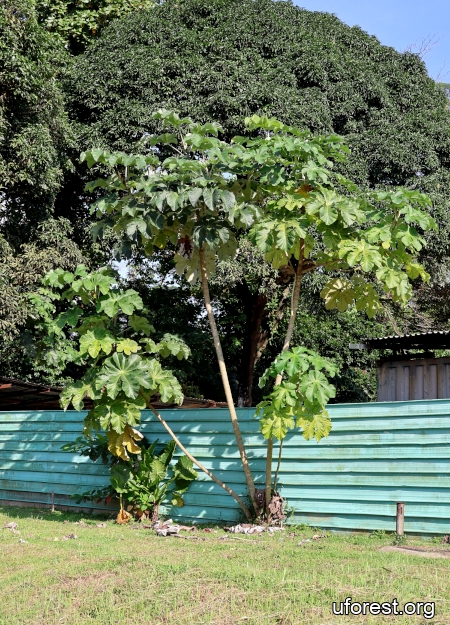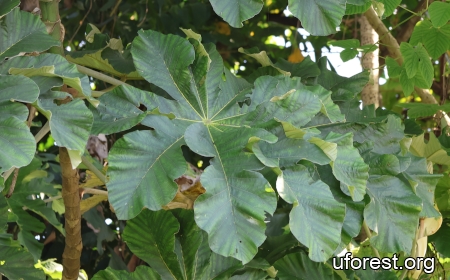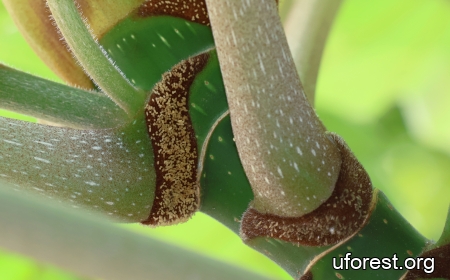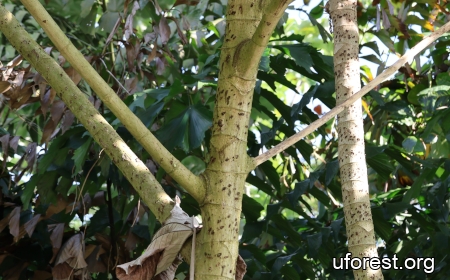Cecropia pachystachya Trécul
| Etymology | Genus | After Cecrops, the mythical Egyptian founder of Athens |
|---|---|---|
| Species | From Greek pachys (thick) and stachys (flower spike) | |
| Family | Urticaceae | |
| Synonyms | - | |
| Common Names | Snake Wood, Trumpet Tree, Pop-a-gun, Guarumo, Wild Pawpaw | |
| Status | Exotic: Naturalised | |
| Form | Tree | |
| Native Distribution | Argentina, Paraguay, Brazil | |
Diagnostics:
A naturalised tree found mainly in the northern and western forest fringes in Singapore. The stem has obvious segments. The large leaves are deeply lobed and often with wavy margins. It can be differentiated from a less common congener, Cecropia peltata for the presence of brown indumentum at the base of the petiole.
Interesting Facts:
The Snake Wood's introduction to Singapore was obscure, but was posulated to have first originated from the Singapore Zoo in 1992 as food for sloths (Lok et al., 2010).
In its native region, it has a strong mutalisatic relationship with ants of the genus Azteca, where Müllerian bodies produced at the indumentum, but this was not seen here.
It is suspected to outcompete with Macaranga species due to its gregarious flowering and fruiting, and the presence of pollinators and dispersals by insects and birds (Lok et al., 2010).

Tree along Canberra Road (2025).

Leaf.

Brown indumentum with white Müllerian bodies at the base of the petioles.

Leaf base.

Stem, showing the petiole scars.

Stipule.
References
Lok, A. F. S. L., Tan, K.-X., Chong, K. Y., Nghiem, T. P. L., & Tan, H. T. W. (2010). The distribution and ecology of Cecropia species (Urticaceae) in Singapore. Nature in Singapore, 3, 199–209.
Author: Siyang
Posted: 2025-10-25 / Modified: 2025-10-26